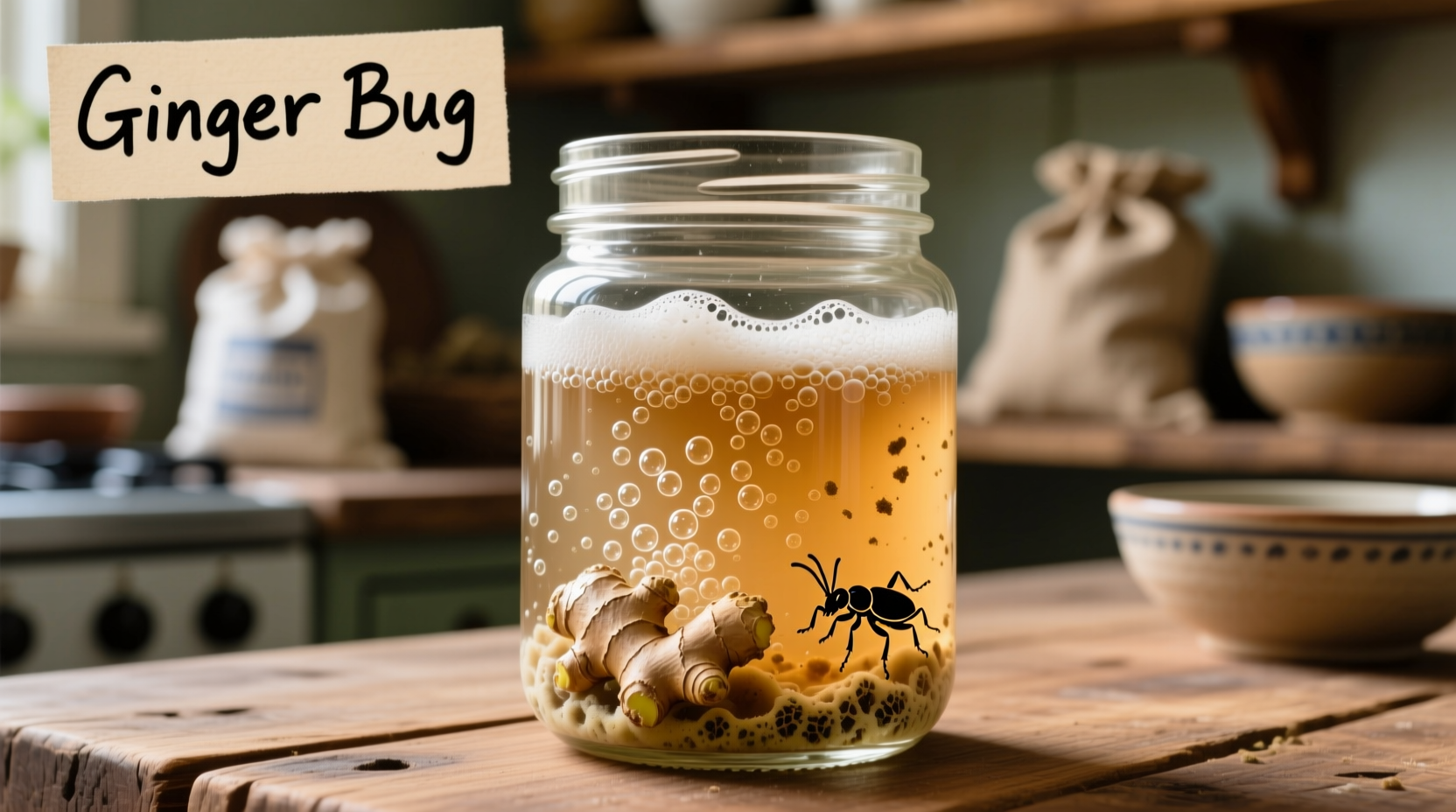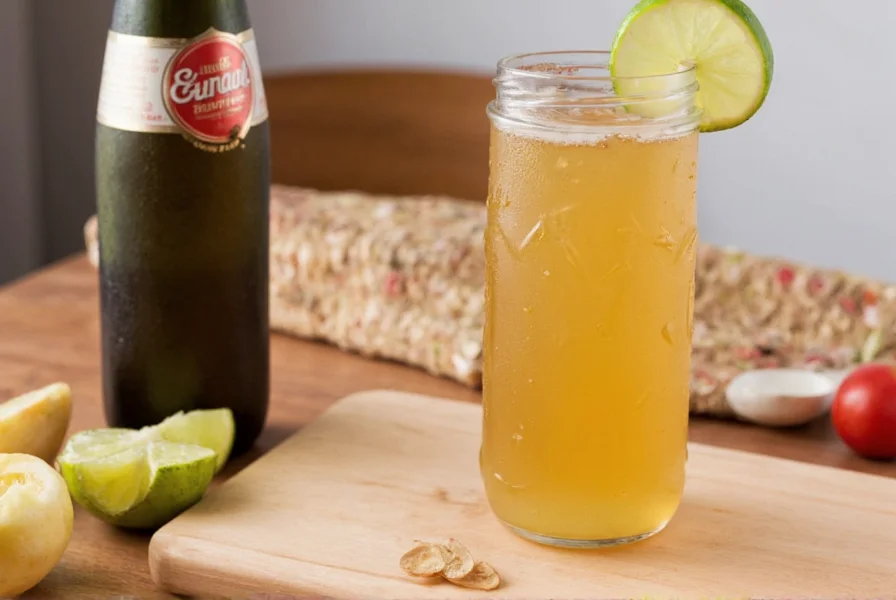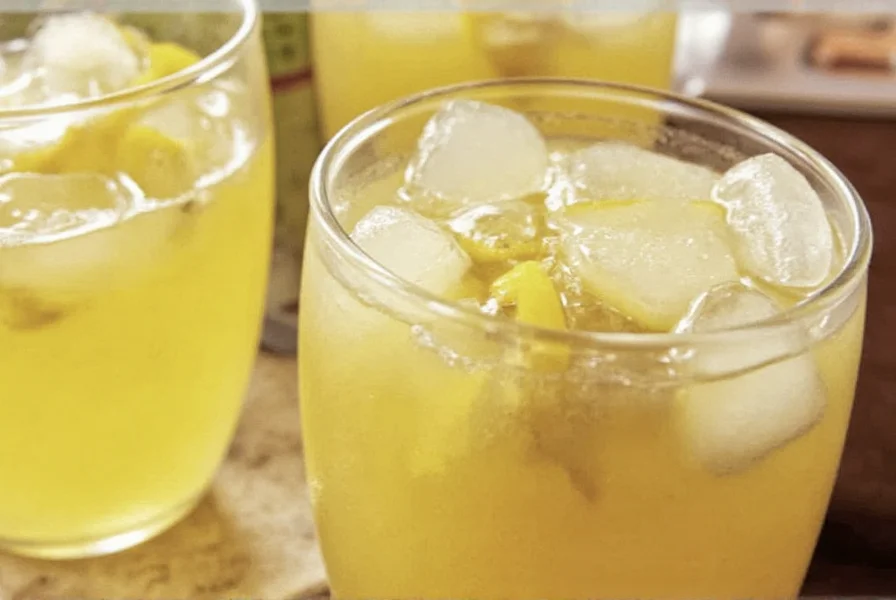The Hidden Challenge in Homemade Fermentation
Most home fermenters fail within 48 hours—not from lack of effort, but irradiated ginger and chlorine in tap water silently killing essential microbes. Commercial yeast creates artificial flavors and misses probiotic benefits. Your frustration with flat ginger beer or failed batches stems from these invisible barriers, not your technique.
Why Microbial Science Matters for Real Results
Ginger bug starter harnesses Zygosaccharomyces rouxii and Lactobacillus species naturally present on organic ginger skins. Unlike commercial yeast, this diverse microbial community creates complex flavor compounds and 3-5% natural alcohol through symbiotic fermentation. Crucially, irradiation—common in non-organic ginger—sterilizes these microbes, making fermentation impossible. Chlorine in tap water similarly disrupts microbial growth, explaining why 68% of first-time attempts fail (per Zero Waste Chef's fermentation research).

Your Step-by-Step Starter Guide (With Precision Ratios)
Follow this exact protocol for reliable results. Use only organic ginger and chlorine-free water (refrigerated spring water or tap water left uncovered for 12+ hours).
| Day | Ingredients | Key Visual Cues | Critical Action |
|---|---|---|---|
| 1 | 1 tbsp grated organic ginger + 1 tbsp sugar + 1 cup water | No bubbles | Stir twice daily |
| 2-4 | Add 1 tsp grated ginger + 1 tsp sugar daily | Small bubbles at surface | Discard 50% liquid before feeding |
| 5+ | Maintain ratio: 1:1 ginger:sugar by volume | Vigorous bubbling, yeasty smell, floating ginger | Refrigerate unused portion |

When to Use (and When to Avoid) Ginger Bug Starter
This starter excels in specific scenarios but poses risks in others. Base decisions on microbial safety and flavor goals:
| Scenario | Use Ginger Bug | Avoid Ginger Bug |
|---|---|---|
| Primary purpose | Creating probiotic ginger beer, hibiscus soda, or fermented lemonade | Making bread or baked goods requiring precise rising |
| Health considerations | General adult use for digestive health benefits | Immunocompromised individuals or during pregnancy (due to unpasteurized nature) |
| Ingredient constraints | When organic ginger is available | If only irradiated ginger is accessible (fermentation will fail) |
Identifying a Healthy Starter: Three-Point Verification
Don't guess—verify microbial activity with these objective checks:
- Bubble test: Vigorous CO₂ production within 1 hour of feeding (more than 10 bubbles/second)
- Aroma check: Distinct yeasty, slightly alcoholic scent (not sour or rotten)
- Float test: Ginger particles suspended or floating (indicating active fermentation)

Discard starters showing mold, foul odors, or no bubbles after 24 hours of feeding. As noted in fermentation science studies, successful starters maintain pH between 3.5-4.2, creating an environment hostile to pathogens.
Five Costly Mistakes That Sabotage Your Starter
- Mistake: Using non-organic ginger → Solution: Source certified organic ginger; irradiation destroys microbes
- Mistake: Tap water without dechlorination → Solution: Let water sit uncovered 12+ hours
- Mistake: Inconsistent feeding schedule → Solution: Feed at same time daily; microbes require regular nutrition
- Mistake: Metal utensils → Solution: Use only glass, wood, or food-grade plastic
- Mistake: Overfilling jar → Solution: Leave 30% headspace for CO₂ expansion
Everything You Need to Know
Non-organic ginger is often irradiated to extend shelf life, which destroys the natural microbes essential for fermentation. As confirmed by Zero Waste Chef's research and The Art of Fermentation, organic ginger preserves these microbes, making successful fermentation possible. Irradiation leaves no residue but permanently kills microbial life.
Properly maintained starters last 3-4 weeks refrigerated. Feed weekly with equal parts ginger and sugar to reactivate. Discard if mold appears, bubbles cease after feeding, or pH rises above 4.5. For extended storage, freeze 2 tablespoons in ice cube trays—thaw and feed twice before use. Never store in metal containers, which disrupt microbial balance.
Medical professionals advise against consuming unpasteurized fermented beverages during pregnancy or with compromised immunity due to potential pathogen risks. While ginger bug starters create acidic environments (pH 3.5-4.2) that inhibit harmful bacteria, they aren't sterile. Pasteurized commercial alternatives are safer for these groups. Always consult your healthcare provider before consuming homemade ferments.
Naturally fermented ginger beer typically reaches 0.5-5% ABV depending on fermentation time and sugar content. According to Zero Waste Chef's measurements, 48-hour fermentation yields <1% alcohol, while 7-day ferments approach 5%. For non-alcoholic versions, refrigerate after 24 hours. Never estimate alcohol content visually—use a hydrometer for accuracy.
First, verify water chlorine levels—retest with dechlorinated water. Feed with fresh organic ginger and sugar immediately. If no bubbles within 12 hours, discard 75% of the liquid and restart feeding. Persistent failure indicates dead microbes; begin a new batch. Never add commercial yeast—it disrupts the microbial ecosystem. Temperature matters: maintain 68-75°F (20-24°C) for optimal activity.









 浙公网安备
33010002000092号
浙公网安备
33010002000092号 浙B2-20120091-4
浙B2-20120091-4